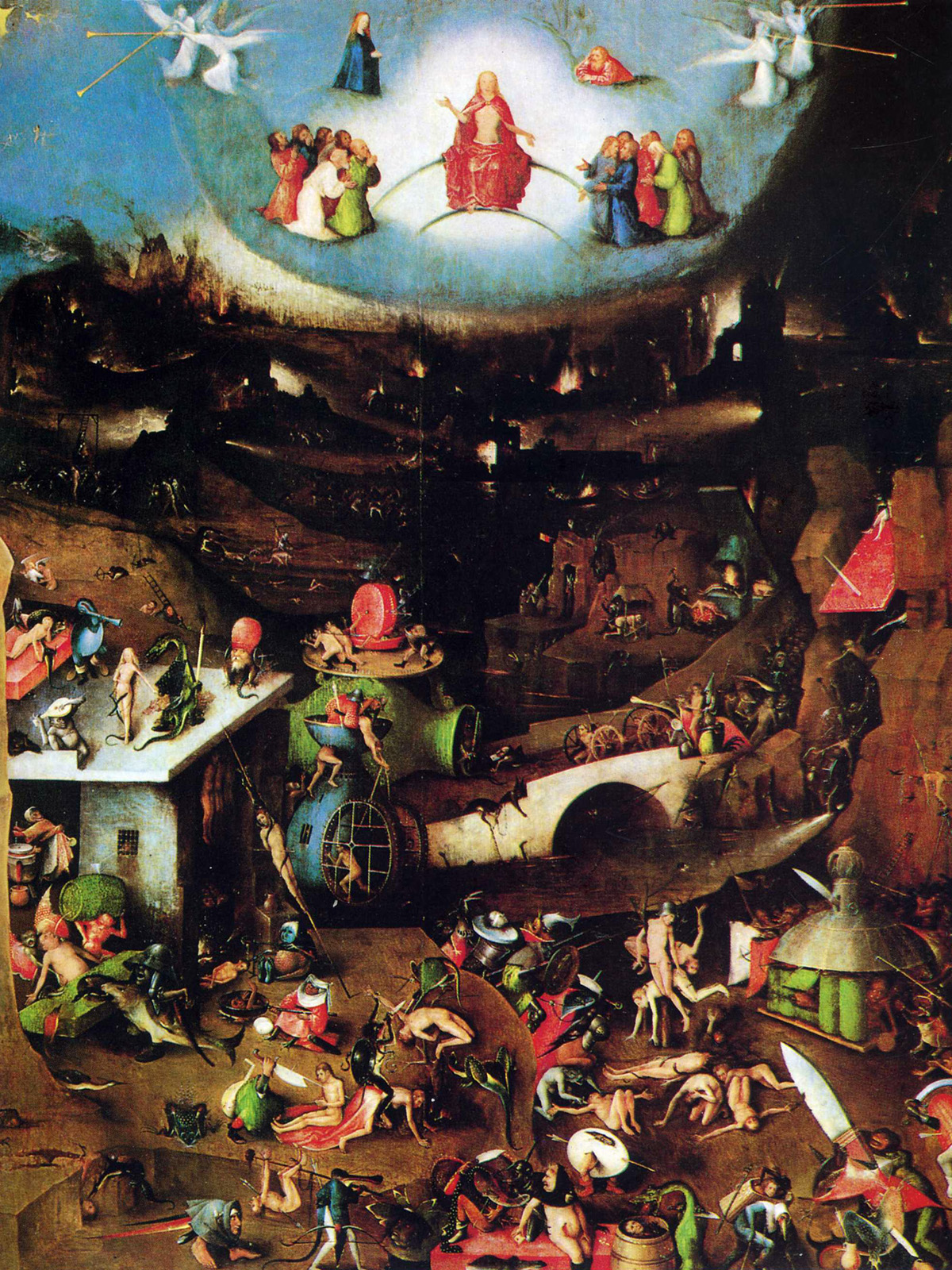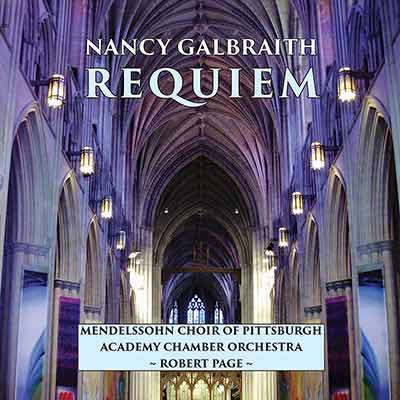
2hn, 2tpt, 2tbn, tba; timp, 4perc; strings
60 Depot Street, Verona, NJ 07044
mail@subitomusic.com • 973-857-3440
| Requiem |
| composer: | Nancy Galbraith (2004) |  |
| text: | traditional | |
| genre: | Concert Choir & Symphony Orchestra | |
| length: | 13 movements, 55:00 minutes | |
| orchestration: | SATB(div); pic, 2fl, 2ob, 2cl, 2bn;
2hn, 2tpt, 2tbn, tba; timp, 4perc; strings |
|
| publisher: | Subito Music Publishing (ASCAP)
60 Depot Street, Verona, NJ 07044 mail@subitomusic.com • 973-857-3440 |
|
| audio: |
| movements: |
1. Requiem Aeternam
2. Dies Irae 3. Tuba Mirum 4. Quid Sum Miser 5. Rex Tremendae |
6. Ingemisco
7. Confutatis 8. Lacrimosa 9. Offertorium |
10. Sanctus
11. Agnus Dei 12. Lux Seterna 13. Libera Me |
|
| world premiere: | 10 April 2005
The Mendelssohn Choir of Pittsburgh • The Academy Chamber Orchestra Robert Page, conductor • Carnegie Music Hall; Pittsburgh, Pennsylvania |
|||
| program notes: | "Requiem" was commissioned by Maestro Robert Page to celebrate his 26th and final year as music director of the Mendelssohn Choir of Pittsburgh. It was begun in the May of 2001 and completed, after numerous revisions, in December 2004. The work was declared "a masterpiece" by the Pittsburgh Tribune Review. | |||
| program notes: by Robert Page |
The purpose for the requiem mass is to address the deceased, the living, and God the Father. For the deceased the message is that finally peace will come, suffering will cease. For the living, there are messages of comfort and assurance. To the Holy Being there are appeals of mercy for the deceased on "That Day" of judgment. Composers differ greatly in their musical emphasis on these three elements, picking and choosing what to include and what to omit. Nancy’s setting is traditional, including the seven large segments of the mass and in only one, the Dies Irae, having sub-sections. | |||
| When Nancy and I first began discussing the work, some two years ago, it was just after the Mendelssohn Choir and I had commissioned and performed the stunning Missa Mysteriorum, scored for chorus and wind ensemble. I wanted a work for chorus and full contemporary orchestra and she was in agreement. Nancy has chosen not to include soloists in this setting. The Cherubini Mass in c-minor is the only other one of the many I have conducted which was sans soloists. | ||||
| The magic of Nancy's work is in its incredible layers of sound, texture superimposed upon texture, yet surprisingly clear and understandable. Also important is her uncanny ability to deliver with equal impact passages of high, high energy and passages of awesome quietude. Melodically she spins wisps of sound in a most vulnerable manner, sweet without being cloying. Her frequent use of bi- and tri-tonality results in sonic skyscrapers. Much like Charles Ives, especially in his setting of Psalm 90, Nancy is a spatial composer, giving the listeners the feeling of being in one place and at the same time hearing and sensing other elements surrounding them. | ||||
| Most important, Nancy writes for singers. She utilizes the complete range of the sections of the choir and in clever mosaic manner brings each of them to the front, so to speak. It is not just a soprano's world! | ||||
| We are honored to present this wonderful musical gift to the world. We of The Mendelssohn adore Nancy, her work, her genuineness, her complete commitment to the art of Music, and praise her for her amazing creative abilities. —Robert Page | ||||
| press bytes: | Galbraith's "Requiem" is a masterpiece that had the audience members on their feet at the end, cheering with tears in their eyes.
...a piece with universal appeal. Its seven sections included the powerful chords of the "Tuba Mirum" and a tender "Lacrimosa," indicating the scope and breadth of Galbraith's vision in a work that built, movement by movement, a contemporary spiritual connection.
"...the season's best new music..."
|
|||
| recordings: |  |
Nancy Galbraith: Requiem
CD Baby • 2019 • UPC: 888295866675 |
| source: | nancygalbraith.com | |
| All content in nancygalbraith.com: Copyright © by Matthew Galbraith (Unless Noted). All Rights Reserved. International Copyright Secured.
All Music Represented in Audio Samples: Copyright © by Subito Music Inc (ASCAP). All Rights Reserved. International Copyright Secured. |